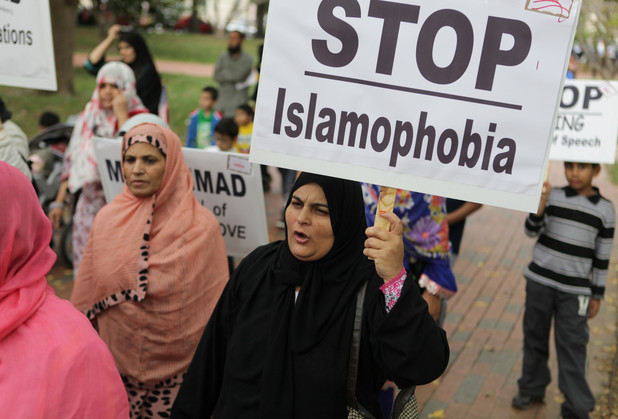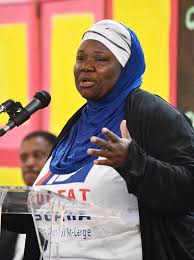Islamophobia has been defined and explained differently by media scholars since its use as a term escalated in the 20th century, but despite the differences in the varying definitions, there are important areas of convergence on key terms such as “fear, hatred, prejudice, profiling, stereotyping and irrational hostility and discrimination against the Muslims on the basis of their religion – Islam”.¹
Evidently, there are increasing cases of Islamophobic attacks across the world, many of which were caused by the spate of terrorist attacks carried out by extremists who hide under the name of Islam and of course, media stereotypes of criminalizing Muslims and painting them bad.
The 2016 gruesome murder of a New York Imam, Maulana Akonjee and his associate, Thara Uddin on a busy street near a mosque in Queens by a white terrorist² and another attack in 2017 in the UK, where “a vehicle ran over pedestrians close to two mosques in a north London neighbourhood”³ are few examples of Islamophobic attacks on Muslims.
The world will never forget so soon the 2019 terror attacks on the Christchurch Mosque in New Zealand, where 50 worshippers were killed, also by a white supremacist.⁴
Hate speeches and tweets directed against Muslims and the coloured communities in the US by President Donald Trump have been linked to fueling the unfortunate phenomenon.
In Nigeria, there have been many cases of attacks, harassment and victimisation of Muslim ladies at both public and private places,⁵ many of which never made it to the media because the victims are Muslims and the culprits are Christian fanatics, whose godfathers control the media in Nigeria. And of course, he who pays the piper dictates the tune.⁶
While attacks by white supremacists, right wing terrorists and Christian fanatics are not blamed on Christianity, attacks carried out by extremists in the name of Islam gained prominence in the media – with Muslims being labeled with the identity of terrorists.
For instance, The Sun, a British tabloid of December 2015, published on its front cover a story headlined, “Here’s what Terrorists Look Like”! with three images of a Hijabi Muslimah, a man in turban with a beard and a masked man, one of DAESH’s hit men.
The Boko Haram insurgent group members are similarly tagged Jihadists or Islamists by some Nigerian media,⁷ thereby forcing what the group of misguided youths represent on the generality of Muslims.
Therefore, the media is no doubt a powerful tool in spreading or curbing Islamophobia and in the creation of Islamophobes. Just as it has been used greatly to fuel Islamophobic attacks against the Muslims, it can as well be used to combat the spate of stereotypes.
This is where the issue of media ownership comes in. There is the burning need for the Muslim elites to establish and invest in the media to help change anti-Islam narratives. This is one of the aims of setting up Muslim News, the purpose of which it has served in the last one year.
Monitoring the reportage of Muslims in the media is another method of combating Islamophobia. This has proved to be very effective in countries like the U.S. and the United Kingdom, through the efforts of Muslim rights groups like the Council on American–Islamic Relations (CAIR) in the US and the Muslim Association of Britain (MAB) in the UK. Muslim Rights Concern (MURIC), Muslim Public Affairs Council (MPAC) and the Hijab Rights Advocacy Initiative (HRAI) are also performing similar roles in Nigeria.
There is also the need for Muslim journalists to come out of their shells in a bid to counter Islamophobia in the media. They need to be ready to stand for Islam and mobilise unbiased colleagues of theirs to change the status quo and fight the scourge. Despite hatred from many Nigerian propagandists who parade themselves as journalists, there are still, yet, those who stand for objectivity, as seen in the case of Hijab assaults in Nigeria.⁸
Except the world unites against Islamophobia, the ripple effects of the phenomenon, which has kept throwing up extremists from both sides of the divide, may linger longer than expected and the entire universe will have to pay for the consequences of their collective negligence.
REFERENCES
1) Islamophobia. Accessed on 12th August, 2019 from https://en.m.wikipedia.org/wiki/Islamophobia retreived from wikipedia.org
2) Al- Jazeera — US: Imam and associate shot dead in New York City. August 14, 2016
https://www.aljazeera.com/aamp/news/2016/08/killed-shooting-york-mosque-160813213229627.html
3) Al-Jazeera — Finsbury Park mosque: Man dies as van hits worshippers. June 19, 2017
https://www.aljazeera.com/amp/news/2017/06/van-rams-pedestrians-london-finsbury-park-170619001156442.html
4) Turkish man wounded in Christchurch mosque attack dies. May 3, 2019.
Retrieved from https://www.aljazeera.com/news/2019/05/turkish-man-wounded-christchurch-mosque-attack-dies-190503015509011.html
5) Hijabophobia: Muslim Parents Warn ISI Over Girl Child Harassment. July 5, 2019.
Accessed on August 12, 2019 from
Hijabophobia: Muslim parents warn ISI over girl child harassment
6) Abubakar, R. (2018). Media Narratives of Muslims in Nigeria: Facts and Fallacies. Lagos: Rawshield PR Company.
7) Punch Newspaper. Islamist terrorism: Obasanjo, Soyinka on point.
Retrieved from Punch editorial May 29, 2019 on https://punchng.com/islamist-terrorism-obasanjo-soyinka-on-point/
8) Abubakar, R. (2016). Hijab and the Nigerian Press. Lagos: Rawshield PR Company.



